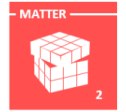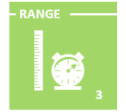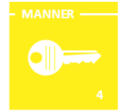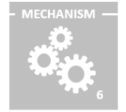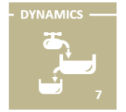Effectiveness - ¨OAP¨
(The process-wise Manner)

The Effectiveness: how the organization stands in its business, in order to handle the Critical Success Factors (CSF) related to its processes.
Effectiveness is the second element that defines the "Manner" block of the BM. It is linked to the process perspective of the business.
Defining the Effectiveness element of a BM is defining the "Operational Advantage Profile" (OAP) with regard to CSFs, for each kind of process, i.e. the way to play the business game through specific operational advantages.
The OAP basically determines the organization's posture regarding the way to handle CSFs through operations. CSFs are internal or external factors on which the organization has some control, and that have direct and serious impact on the effectiveness of its business. CSFs may be handled through Processes at different levels:
- Input level: CSFs handled through the characteristics of supplies or resources used in processes
- Output level: CSFs handled through the characteristics of the output value of processes*
- Operating level: CSFs handled through the characteristics of operated activities
An operational advantage can result in the possibility to achieve a high level of effectiveness, and/or an opportunity to achieve effectiveness in a different way.
Achieving Effectiveness, depending on the nature of the fundamental CSFs to consider, is done through:
- Operational Enablers: process' attributes that need to reach a minimum level to allow effectiveness, and/or
- Operational Enhancers: process' attributes whose level has a strong positive impact on effectiveness, and/or
- Operational Differentiators: process' attributes that play a positive role on effectiveness in a different way (compared to usual ways operations are run by organizations for such CSFs).
Defining the Operational Advantage Profile is a trade-off, regarding which CSFs to prioritize and regarding which operational options to choose.

OAP can be split between the 3 Super-Processes:
- Market OAP: Effectiveness through Market-related processes
- Capture OAP: Effectiveness through Capture-related processes
- Industry OAP: Effectiveness through Industry-related processes
(click on the following elements for more details)
> Market OAP
(Playing with Market processes)
- Operational Enablers:
- CSF for a 3 star restaurant: food quality. Operational Enabler: quality of ingredients used (input level: Supplies)
- CSF for a Consuper Electronics factory : Speed of manufacturing. Operational Enabler: use of advanced component assembly machines (input level: Resources)
- CSF for an aircraft manufacturers willing to sell to China or Brazil: technology transfer. Operational Enabler: delivery of traning, manufacturing methods etc. in addition to the planes (output level: Products)
- CSF for an IT service provider : guarranty of a working system on the long run. Operational Enabler: having an activity of maintenance and update deliver (operating level: Activities)
- Operational Enhancers:
- CSF for a management Consulting company : knowledge. Operational Enhancer: KM database to take advantage of past cases (input level: Resources)
- CSF for a DSL Internet provider : additional services. Operational Enhancer: Providing cloud memory space, email accounts etc. (output level: Products)
- CSF for a beer brand: notoriety. Operational Enhancer: doing media advertizing, or building social media presence (operating level: Activities)
- Operational Differentiators:
- CSF for fashion designer Stella McCartney: Materials quality. Operational Differentiator: use of synthetic or woven materials, but no leather (input level: Supplies)
- CSF for Apple : aftersales services. Operational Differentiator: use of "Geniuses" in Apple Stores to solve problems, update software etc. (input level: Resources)
- CSF for a 3 star restaurant: food quality. Operational Differentiator: "molecular cuisine" (output level: Products)
- CSF for a coffee business : image of sustainability. Operational Differentiator: working with small producers (operating level: Activities)
Note that the analysis of CSFs through Operational Enablers, Operational Enhancers and Operational Differentiators for the Market functions (mostly for the "output level"), may be compared to the "ERRC Grid" and "Strategy Canvas" approach of the Blue Ocean Strategy (by W. Chan Kim and Renée Mauborgne): CSF and their relevance for the business are considered, as well as the possible ways to respond to them. The Operational Advantage Profile proposed by the Bm2 framework is a more general approach of CSFs, not restricted to the value proposition.
> Capture OAP
(Playing with Capture processes)
CAPTURE ON TARGETS' SIDE:
- Operational Enablers:
- CSF for suppliers in public markets in some countries: key contacts. Operational Enabler: use of intermediaries (input level: Resources)
- CSF for a web site selling hotel room nights: price. Operational Enabler: offering similar prices as the business leaders www.hotels.com and www.booking.com (output level: Revenues)
- Operational Enhancers:
- CSF for a travel agency: access to potential customers. Operational Enhancer: buying leads from affiliate web sites (input level: Supplies)
- CSF for a telecom company: customer relationaship management. Operational Enhancer: usage of an efficient CRM system (input level: Resources)
- CSF for a software editor: customer retention. Operational Enhancer: working with subscription models (output level:Revenue Schemes)
- Operational Differentiators:
- CSF for confectionery brand Toblerone: distribution network. Operational Differentiator: contracts with duty-free stores in airports (input level: Resources)
- CSF for Amazon, at its beginning : availability for customers, to buy books. Operational Differentiator: Internet sales (before, such a CSF would have been called "wide store network", but the fundamental CSF is actually availability) (operating level: Activities)
CAPTURE ON SOURCES' SIDE:
- Operational Enablers:
- CSF for a fireworks display company: access to pyrotechnics materials. Operational Enabler: licences to be allowed to buy professional fireworks (input level: Resources)
- CSF for a social network : size (the threshold to benefit from a network effect). Operational Enabler: a minimum number of active users to "acquire" (output level: Supplies)
- CSF for a exporter in some countries, for some markets, where corruption cannot be avoided: access to the market. Operational Enabler: Practicing bribery (the organization "buys" its access to the market) (operating level: Activities)
- Operational Enhancers:
- CSF for convenient stores: purchasing capabilities. Operational Enhancer: usage of a central purchasing body (input level: Resources)
- CSF for a public sector organisations: getting the best prices. Operational Enhancer: usage of e-tendering methods (operating level: Activities)
- Operational Differentiators:
- CSF for a Venture Capital fund: diversity of investments. Operational Differentiator: usage of Equity Crowdfunding paltforms. Although the traditional investment patern of VC funds is very different from how equity crowdsoucing works, a VC fund may choose to invest its money through crowdsourcing platforms that would be seen as brokers. (operating level: Activities)
> Industry OAP
(Playing with Industry processes)
- Operational Enablers:
- CSF for a consumer electronics startup: new product development (NPD) lead time. Operational Enabler: Procedures and methods for lean design (input level: Resources)
- CSF for a smartphone manufacturer: photo capabilities. Operational Enabler: R&D activities related to camera features (operating level: Activities)
- Operational Enhancers:
- CSF for an antivirus editor : customer satisfaction. Operational Enhancer: quality of the software (ability to actually protect from virus) (output level: Resources)
- CSF for Xerox : efficient sales process. Operational Enhancer: high level training of the sales force (operating level: Activities)
- Operational Differentiators:
- CSF for Google: knowledge of users' interests (to be able to sell targeted ads). Operational Differentiator: use of words input from users: with the search engine, users' interests is directly deduced from the searched terms (input level: Supplies)
- CSF for Rocket Internet: speed of business implementation. Operational Differentiator: re-use of internal IT infrastructure already deployed for other businesses (input level: Resources)
- CSF for Apple : Brand recognition. Operational Differentiator: strong focus on design (operating level: Activities)
(*) Note that outputs of processes are usually input of other processes. For example, a CSF for a restaurant may be the high standard of its meals, which can be handled by using ingredients of high quality. This can be taken into account as a requirement for the inputs of the cooking process (Market Function), or as a requirement for the output of the purchasing process (Capture Function). Both approaches are equivalent: the choice may be done considering what makes more sense for the analysis of the business. In the present case, if the cooking process is the same whatever the quality of the ingredients, but the suppliers are very different, then it makes more sense to consider the purchasing process (Capture Function) when analyzing this specific CSF.
Competitiveness < PREVIOUS - NEXT > Efficiency

